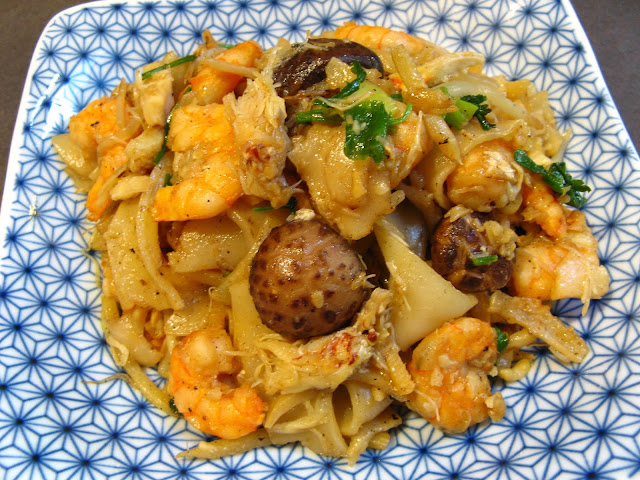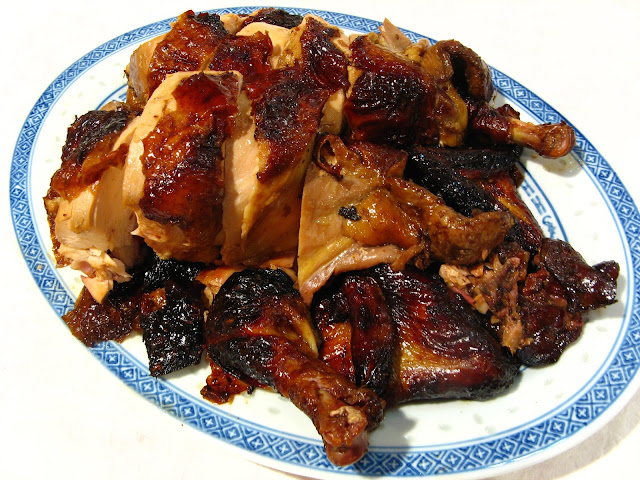This recipe was updated on 30 Aug 2016. The
Cantonese for Dungeness crab was added to the title.
This is a luxurious seafood chow fun dish using shrimp and
cooked Dungeness crab meat with Gold Coin Shiitake mushrooms. Abalone sauce
compliments this dish, but oyster sauce can be substituted if abalone sauce is
not available. I happen to live in an area where freshly cooked Dungeness crab
can be obtained seasonally (you just have to take the time to remove the meat
from the shell), but you can substitute any cooked crab meat, fresh, frozen, or
canned.
Gold Coin Shiitake mushrooms are just small Shiitake
mushrooms that can be purchased at your local Asian market or Asian herb store.
Small mushrooms are used because they can be eaten whole in one bite, but you
can substitute regular sized mushrooms cut into strips if the small mushrooms
are not available. The small mushrooms are more expensive than the regular sized
Shiitake mushrooms, and they vary in price depending upon the quality of the
mushroom. You can get the best quality Shiitake mushrooms at an Asian herb
store (with the prices to match), but while Asian markets have lower quality
mushrooms in comparison, the mushrooms at Asian markets are still very tasty.
The main differences between the mushrooms at the herb store and the Asian
market are the appearance and “meatiness” of the mushrooms.
Shiitake mushrooms sold in Asian herb stores are whiter in
color than black, with a pattern (resembling a flower, as opposed to being a
solid black), are prized and priced accordingly. These mushrooms also are more “meaty”
than their counterparts, being thicker and having more texture when eaten than
the thinner mushrooms normally sold at Asian markets. Some of the best Shiitake
mushrooms sold at Asian herb shops come from Japan and are sold for higher
prices than the Asian market mushrooms. Asian markets sell higher grade
Shiitake mushrooms, but their best mushrooms do not match the quality found at
Asian herb shops. If you’re fortunate enough to have an Asian herb shop near
you, I would urge you to go in and explore their dried goods offerings (not
just mushrooms, but dried fish maw, shrimp, abalone, cloud ear fungus, and the
list goes on…).
Enjoy!






